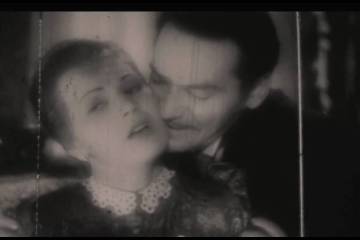David Bowie’s name is a symbol of transformation, creativity, and a bold embrace of artistic expression. During his career, the legendary musician frequently pushed the boundaries of music, fashion, and stage presence, influencing not only the music scene but also contemporary culture as a whole. Even after his passing in 2016, Bowie’s impact is still felt across generations, motivating musicians, visual artists, filmmakers, and admirers worldwide.
Now, a new chapter in his story has emerged. Recent reports confirm the discovery of a previously unknown project hidden away in Bowie’s personal study, locked and untouched for years. This revelation has sparked intense speculation, as admirers and scholars try to imagine what this final creative effort could reveal about the mind of one of music’s most enigmatic figures.
The discovery took place amidst a comprehensive effort to organize and protect Bowie’s extensive assortment of creative works. His archives include many years of journals, song lyrics, set sketches, and avant-garde pieces — a rich compilation that mirrors the boundless curiosity characteristic of his existence. Within this assortment, curators found a notable assemblage: papers and audio tapes hinting at the outline for a grand endeavor Bowie never revealed to the audience.
Although precise information is limited, initial accounts suggest it’s more than merely a collection of tunes. Those knowledgeable about the collection indicate it might integrate components of music, narrative, and visual artistry—a complex idea in line with Bowie’s penchant for merging various forms. From The Rise and Fall of Ziggy Stardust to Blackstar, his last album, Bowie frequently approached his creations as cohesive storytelling experiences rather than individual pieces. This clandestine project seems to adhere to that same principle.
The exact moment of the project’s inception is uncertain, but numerous individuals suggest it may trace back to Bowie’s last years, alongside his work on Blackstar. Debuting in January 2016, merely two days prior to his passing, Blackstar was a poignant goodbye, rich with enigmatic allusions and daring musical exploration. Should the recently unearthed piece originate from this timeframe, it might provide significant understanding into Bowie’s creative mindset as he pondered over his own mortality and legacy.
What makes this revelation so compelling is not just the existence of new Bowie material but what it symbolizes. For an artist celebrated for constant evolution, this hidden creation underscores his lifelong commitment to pushing boundaries, even in his final days. Bowie never stood still. Each reinvention — from glam rock alien Ziggy Stardust to the Berlin-era experimentalist to the elegant Thin White Duke — reflected a refusal to settle. This newly uncovered project suggests that his spirit of innovation endured until the very end.
As the announcement of the discovery spreads, people wonder about the destiny of these materials. Is it right to finish the work and make it accessible to everyone? Or should it be kept confidential, maintaining the enigma Bowie frequently cherished? These moral dilemmas are not unfamiliar within the music world. Releases after an artist’s death often provoke discussions about their artistic choices, and Bowie, famous for his careful management of his persona and creations, might not have planned for this work to be revealed.
Representatives from Bowie’s estate have chosen to stay silent, stressing that all choices will focus on honoring the artist’s legacy. Meanwhile, fans have turned to social platforms to express their aspirations and worries. Some hope for the release of Bowie’s final work, while others are concerned that commercialization might eclipse genuine artistry.
The revelation further highlights the extent to which Bowie’s creative genius surpassed music. His impact reached into the realms of cinema, clothing trends, and visual artistry, with every period marked by a fresh style and conceptual framework. This concluding undertaking, regardless of its format, might symbolize yet another daring declaration from an artist who continuously amazed the world.
Historians and cultural analysts propose that even if this piece is never entirely revealed, its mere presence contributes to the story of Bowie as a pioneering figure until his very last moment. In a time when numerous artists repeat established patterns, Bowie stayed unsettled, inquisitive, and daring — traits that still motivate future generations of artists.
For now, the contents of this hidden archive remain under careful review. Whether these materials will be shared or kept in the shadows, they serve as a powerful reminder of Bowie’s enduring impact and his refusal to conform to expectations. His legacy was never about finality; it was about transformation — and even in death, that spirit remains alive.
David Bowie once said, “I don’t know where I’m going from here, but I promise it won’t be boring.” True to his word, his story continues to evolve in ways no one could have predicted. This latest revelation proves that the journey of understanding Bowie is far from over — and the world is eager for whatever truths this hidden work may hold.




